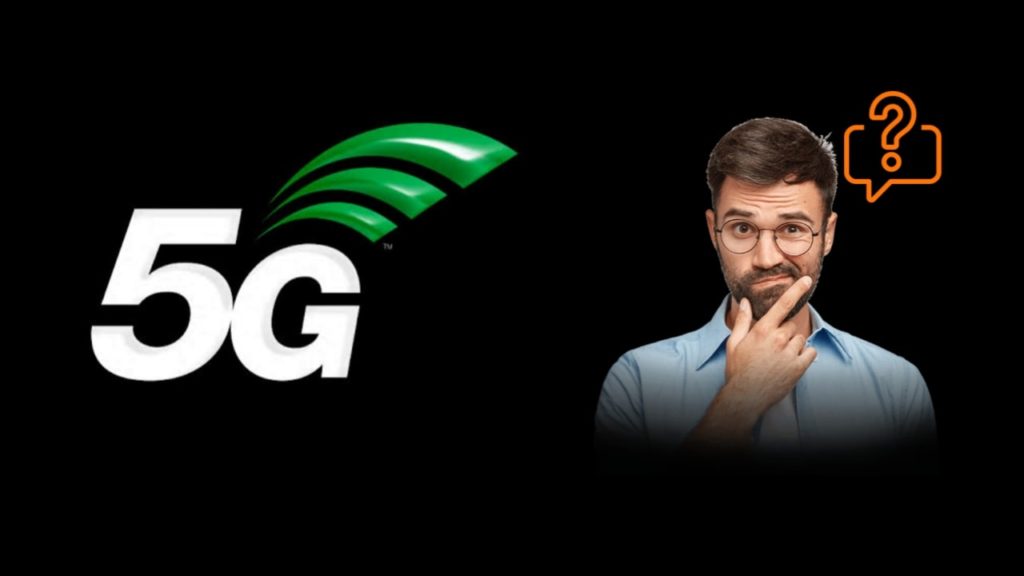5G coverage, where are we really Our experience in the city
5G coverage, where are we really Our experience in the city

Who remembers 5G? The question may sound specious, but the issue is current: fifth generation networks have been talked about for some time now, but the peak of interest was a couple of years ago , when the new technology had also peeped out in our country with the first antennas.
It was 2019 when we too, equipped with one of the tariff plans and compatible devices, went around Milan, one of the first cities covered by the service, looking for 5G like dowsers . Today the situation has changed a lot: according to data from a recent EY research, 5G coverage has reached over 95% of the Italian population and 7,500 municipalities , but has to deal with a non-standalone network infrastructure, which therefore precludes some of the most futuristic applications of technology.
What we are going through is a moment of transition: but how does it affect the experience of end users in practice? Armed with an Oppo Reno 6 Pro 5G, we returned to the city to take a snapshot of the current situation , albeit with all the peculiarities of the specific case, from time to place, from operator to device. It was an adventure not without twists: here’s how it went!
A 'LIGHT' COVER
Two years after the launch of the first networks, the diffusion of 5G is progressively advancing in Italy , even if the performances are still limited compared to the actual ones that will be recorded when the network is completed.
In the silence into which this theme has gradually fallen also due to the arrival of fresher news – as often happens in the world of technology, some time passes between announcements and implementation – two things have happened: on the one hand, compatible smartphones with the new generation networks they have become increasingly accessible from the point of view of the price, and on the other hand the coverage has progressively extended.
The operators who are making efforts on this front in Italy are Tim, Vodafone, Wind3, Iliad and Fastweb : the first two have started with more momentum and are present above all in cities, but the others are also catching up, starting with Wind3 which it currently claims to have reached 95.4% of the population with 5G. This result was achieved by overlapping the coverage in 5G FDD DSS and 5G TDD mode.
And in these acronyms lies the key to understanding the state of the art: the 5G coverage currently available in Italy is a “light” version of the technology , the result, on the one hand, of the enhancement of the current 4G networks (this is the DSS, Dynamic spectrum sharing ) which partly integrate 5G technology and therefore allow for an increase in performance, and on the other the use of the midband frequencies of the 3.6 GHz band (TDD).
However we are still far from the “revolution” promised by 5G technology , that will only come with standalone (i.e. autonomous) networks and in particular with the use of millimeter waves, which are the only ones that can guarantee very low latency and browsing speed very high: only then can we talk about assisted driving, communications between vehicles and remote surgery. Apart from this, when fully operational, the new 5G standard will allow a large part of the traffic that currently transits on land lines, such as ADSL or fiber optics, to be carried over the mobile network.
Right now we are in the previous phase, that of non-autonomous 5G networks that rely entirely on the underlying 4G network. For now, the network infrastructure does not allow direct connection to fifth generation networks : a 5G device must always and in any case be connected to the 4G network, and this also entails greater battery consumption as well as, in the future, network congestion .
OPERATORS AND OFFERS
Hand in hand with the extension of coverage, operators are proposing some offers dedicated to 5G , whose tariffs are generally falling compared to the early days when prices were decidedly high. An evolving situation, which however still needs to take a few steps to become more convenient than 4G: or at least this is the thesis supported in a research just published by SOStariffe .
According to the report, the packages offered by traditional operators offer a rich endowment of Giga at still rather high prices; it goes better with virtual operators, but at the moment the offers based on 4G remain a good compromise from a price point of view, although they are less performing in terms of speed. However, the moment in which we will be able to take navigation in 5G for granted , as is now the case for 4G, should not be far off.
TIM
Tim’s 5G range offers include a TIM Super 5G with 100 GB, unlimited minutes and SMS, multisim for sharing the internet and Google One 100 GB included at 19.99 euros per month, or a TIM Super Unlimited 5G with unlimited GB at 39 99 euros per month or a 50 Giga TIM Super Young 5G plus unlimited traffic for social networks for 11.99 euros per month (reserved for under 30s).
VODAFONE
Among Vodafone’s main offers is RED Max , which offers 100 Giga, unlimited minutes and text messages and other benefits such as a free subscription to Buddyfit for 12 months at the price of 19.99 euros per month (plus 6.99 euros for activation); or the Shake it easy version , dedicated to young people under 30, which offers 100 Giga (unlimited for social networks), unlimited minutes and SMS, free activation at 14.99 euros per month; or the Infinito , designed for higher traffic and for watching HD streaming movies, which guarantees unlimited gigabytes, minutes and text messages, 1000 minutes to non-European countries, 1 gigabyte of non-EU roaming and Buddyfit for €24.99 a month .
WIND3
WindTre also has its own offer dedicated to the under 30s, it is called Young 5G and guarantees 80 Giga (unlimited for some apps), unlimited minutes and SMS for 11.99 euros per month. For the others, there is Di Più Lite 5G , which offers 50 Giga, unlimited minutes and a smartphone included for €12.99 a month, or Call Your Country Premium , which promises 150 Giga, 300 minutes of calls abroad and unlimited national minutes for €13.99 per month; or the Smart Pack 100 5G , which offers 100 Giga, a 5G smartphone also with installments over 24 months at 14.99 euros per month.
ILIAD
Iliad’s dedicated offer is called Giga 120 , and offers 120 Giga, unlimited minutes and SMS also to international landlines and mobiles at 9.99 euros per month, to which must be added the one-time cost of the SIM of 9.99 euros.
FASTWEB
One offer from Fastweb: it promises 90 Giga, unlimited calls to national landline and mobile numbers and 100 text messages for 7.95 euros a month, with zero activation costs for those who request a sim online.

OUR EXPERIENCE
To navigate in 5G you need a suitable smartphone , and we used, as anticipated at the beginning, an Oppo Reno 6 Pro 5G (here the review) . It has proved to be a good travel companion, guaranteeing excellent performance thanks to the Snapdragon 870. The 7 nm system-on-chip, with Adreno 650 GPU and above all X55 5G modem has never had problems with cell connection, signal and network stability , also offering full connectivity with WiFi 6, Bluetooth 5.2 and NFC.
Fortunately, 5G compatibility is no longer the preserve of high-end devices in recent years , as it has arrived on most mid-range smartphones and even some low-end ones. What many, perhaps about to change smartphones, may be wondering is whether it is currently worth investing in a 5G device.
Considering that the time horizon for switching to a truly useful network quality is always shorter, and in any case shorter than the average life of a smartphone, the answer is yes, also because the latest generation devices bring with them the advantages associated with modernity of the processor, in short, hardware designed to keep up with the times for all-round connectivity.
For our speedtests with the Ookla app we used a TIM sim , given the excellent coverage announced in Milan, and we positioned ourselves in different parts of the city: the best download result was recorded in the Isola district, in the northern part of Milan, with 1.3 Gbps (compared to 70 Mbps in upload), while in the south-east, near the Bocconi University, the values stood at 500 Mbps in download and 130 Mbps in upload.
Nothing doing for CityLife , which we had selected because it was close to the city center, where we stayed on 4G, while the situation improved along the eastern ring road and in Sesto San Giovanni, taken as an example for the area north of the city, where we measured 605 Mbps download and 107 Mbps upload.
In general, 5G coverage proved to be decidedly patchy : in many cases it was enough to move 500 meters to find yourself again on 4G. Still too little to hope to connect directly to fifth generation networks, but giant strides have certainly been made over the last year: the connection has a different quality, both in terms of speed and latency. In short, we will have to wait a little longer – less and less now – but the road is traced.
DEVELOPMENTS AND POTENTIAL
In conclusion, what does the future hold for us? The closest time horizon is linked to the possibilities opened up by the switch-off of frequencies that until yesterday were occupied by digital terrestrial, which by 2022 will instead host fifth generation networks , allowing operators to start thinking about standalone.
In Europe, the first standalone 5G network has arrived in Germany – in a handful of German cities including Dusseldorf and Leipzig – thanks to the joint effort of Qualcomm, Vodafone, Ericsson and OPPO. In Italy, before a year it will be difficult to speak of a turning point ; among the operators, the one closest to this milestone is TIM.
Indeed, in Italy 5G is based on three frequency bands : the one between 694 and 790 MHz, defined by convention as Band 700, is the most effective in penetrating the signal inside buildings and was assigned to television broadcasters on digital terrestrial. To free her it was necessary to find an agreement at EU level, and in our country the process is underway (three-year period 2020-2022).
The other two bands are the intermediate 3.7 GHz band (between 3.6 and 3.8 GHz) and the 26 GHz band (between 26.5 and 27.5 GHz). Millimeter waves begin in this last band of the spectrum , characterized by the possibility of guaranteeing a higher transfer speed, even higher than fiber optics.
They are not yet used and it is not known when they will come into operation, but they would allow access to remote services that would be unthinkable with previous technologies , from autonomous driving to remote surgery , through the automation of industrial processes .
In general, one of the applications that we will see increasingly spread will be that of 5G for Fixed Wireless Access , a technology that provides access to fixed broadband services to homes or offices through the wireless network with an experience similar to that of traditional broadband on cable which, as we know, in certain places just doesn’t arrive.
This brings us to a note that must necessarily be considered in our conclusions: we decided to carry out field tests in Milan because, in addition to the convenience of the editorial office, it seemed to us the ideal place to verify the state of the art of 5G in Italy. However, this is probably a situation comparable only to other large Italian cities – at the top of the Ookla speedtest ranking a few months ago was Naples , followed by Turin and Bologna – but it is not necessarily true for the rest of the peninsula .


